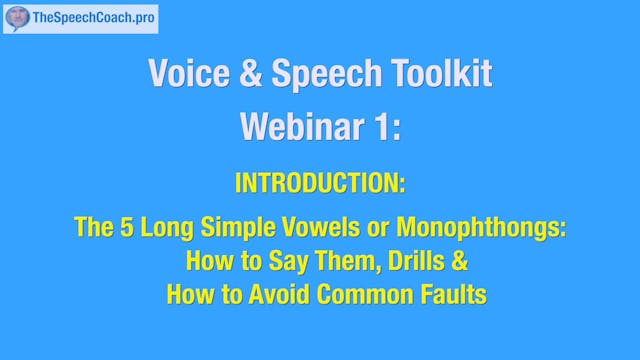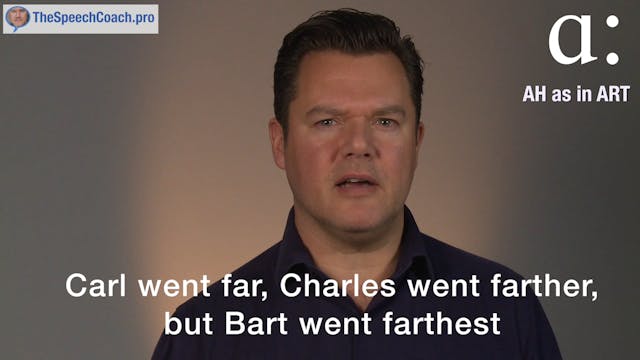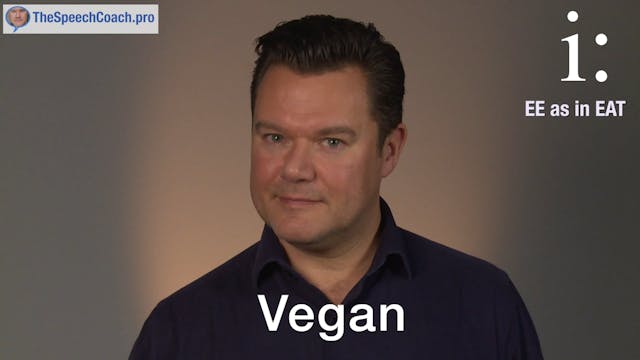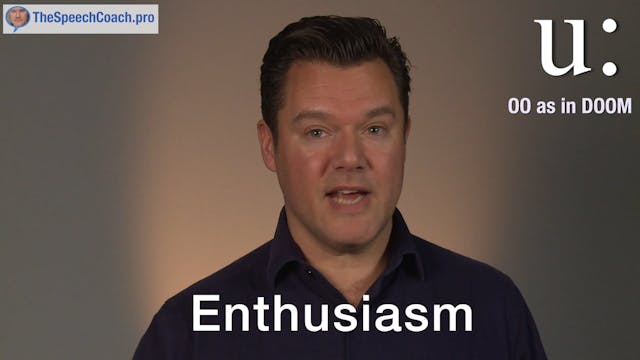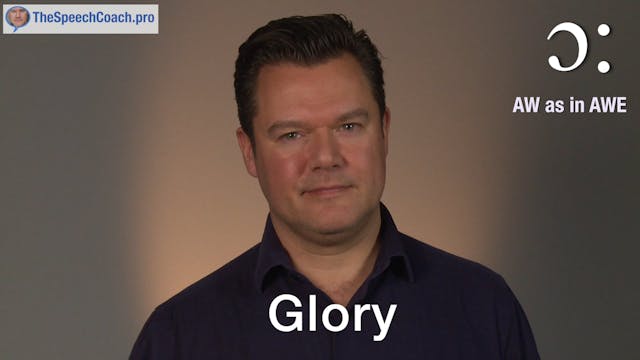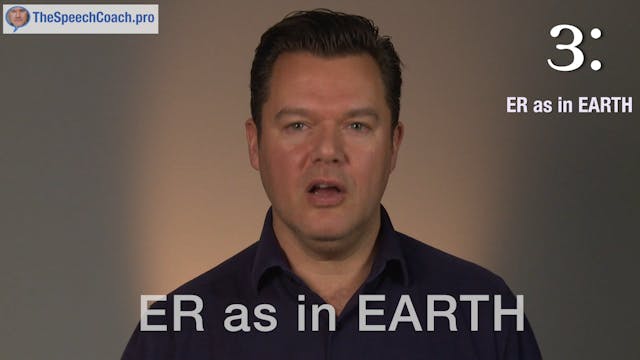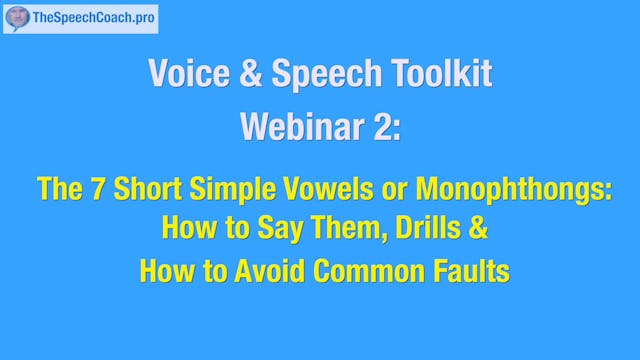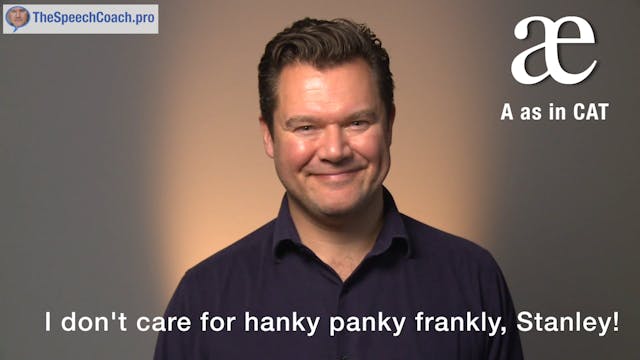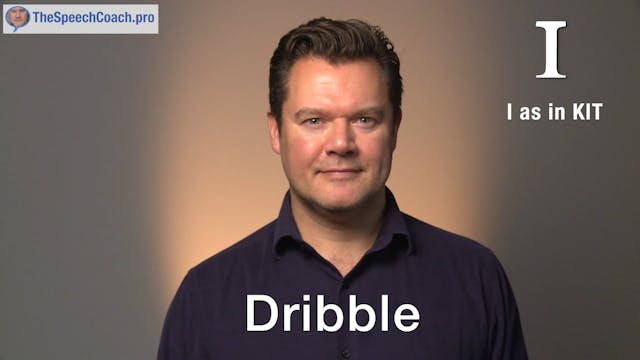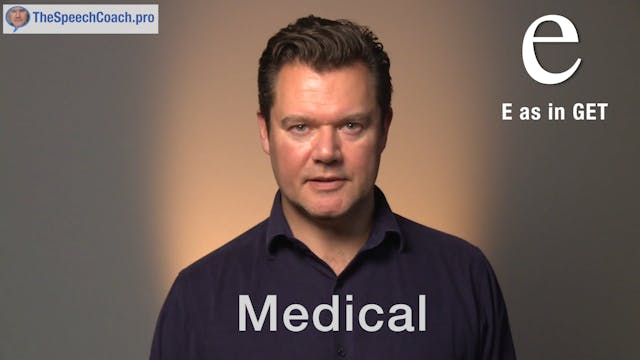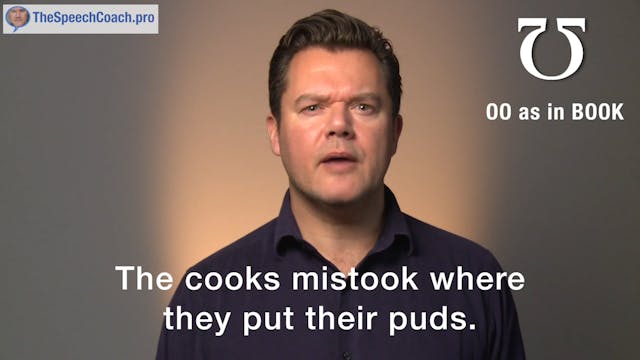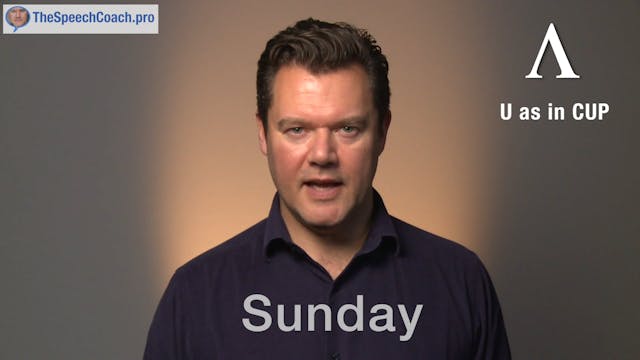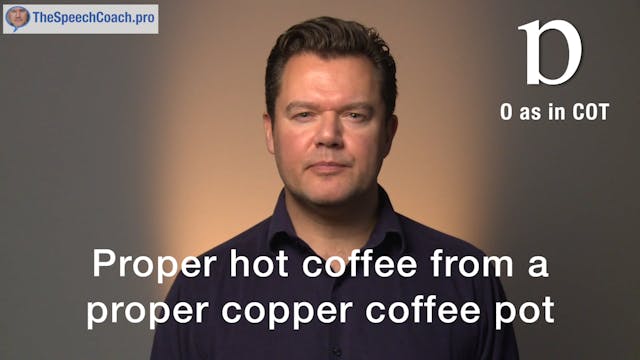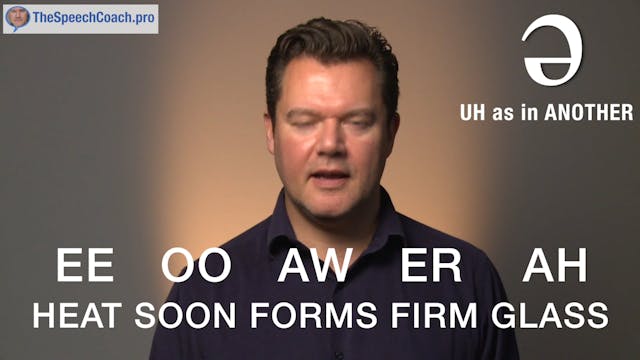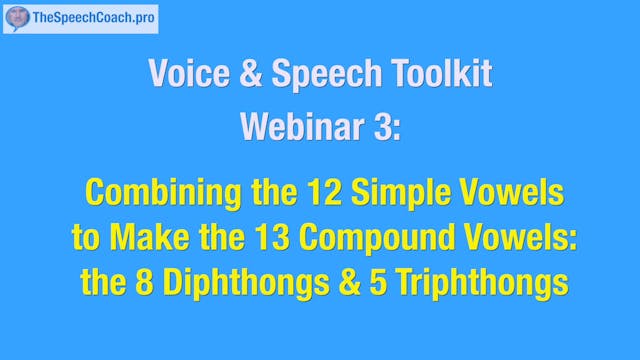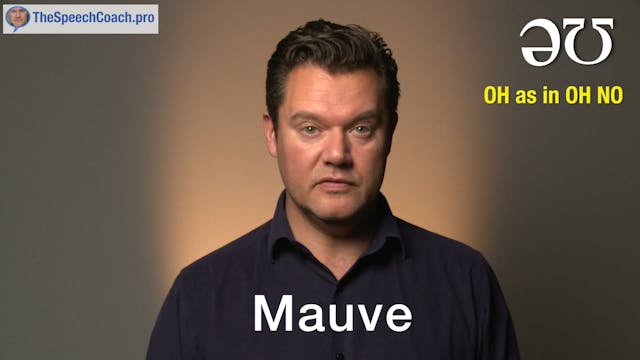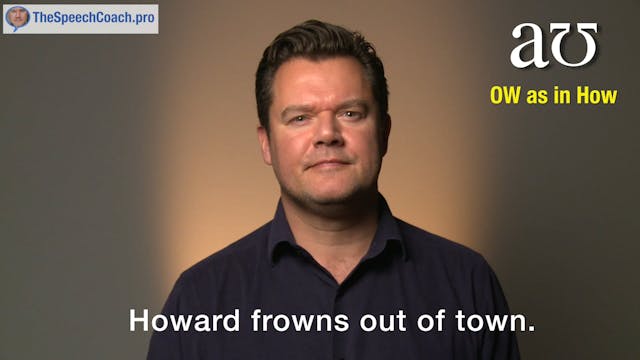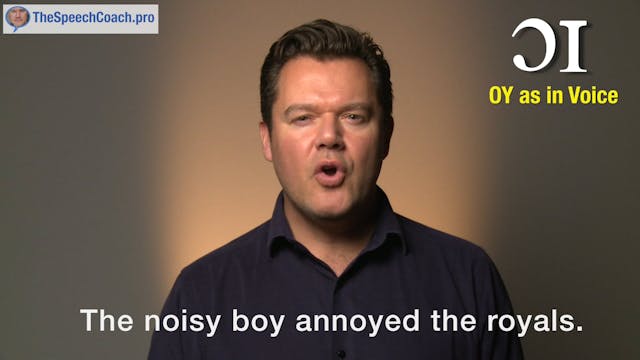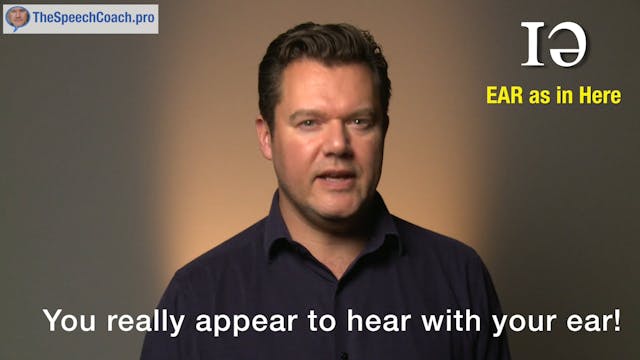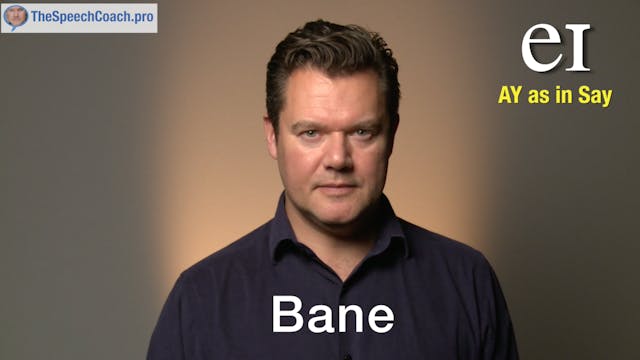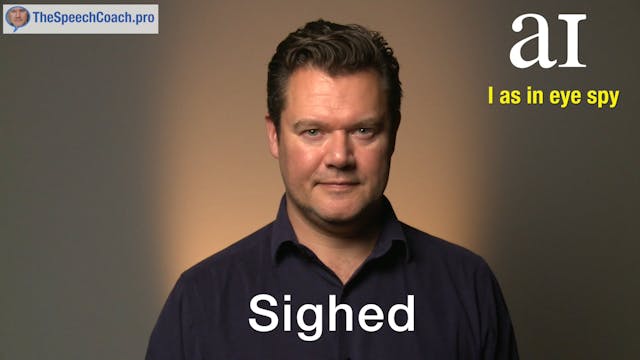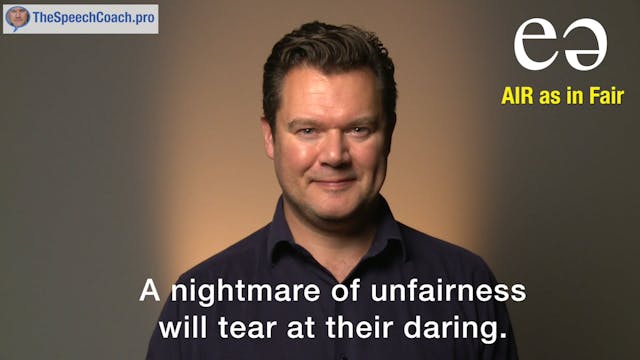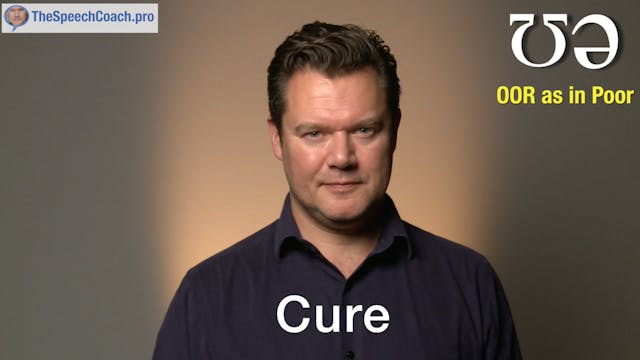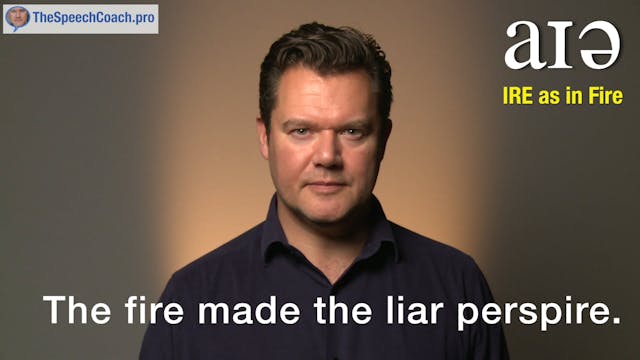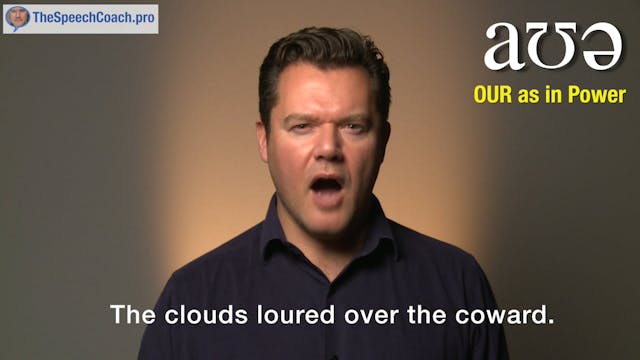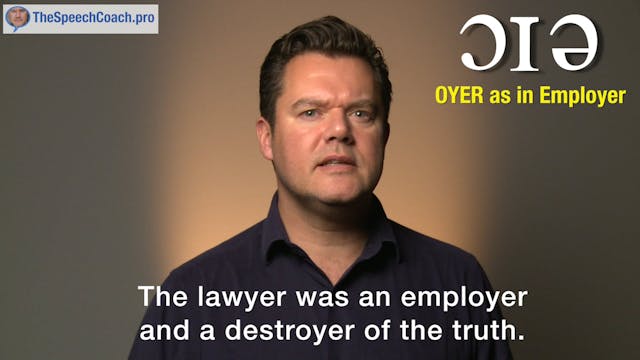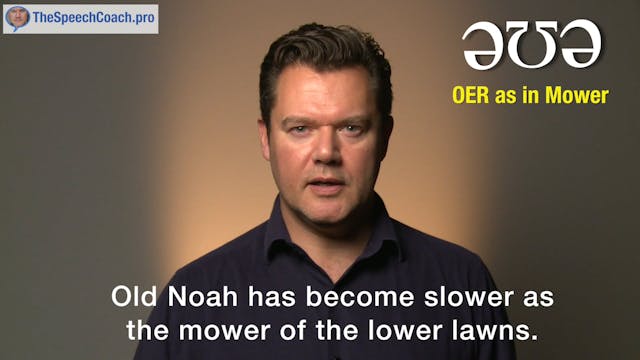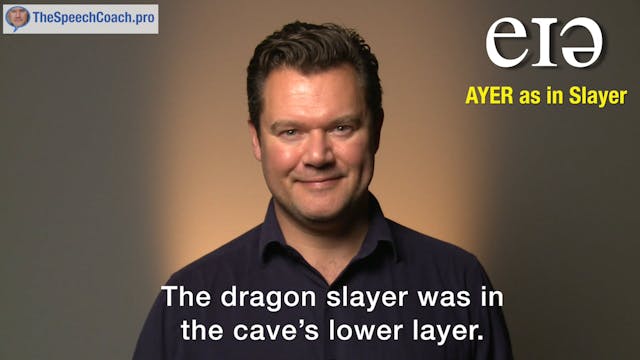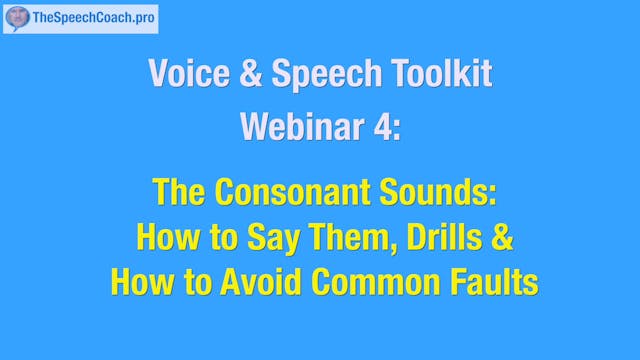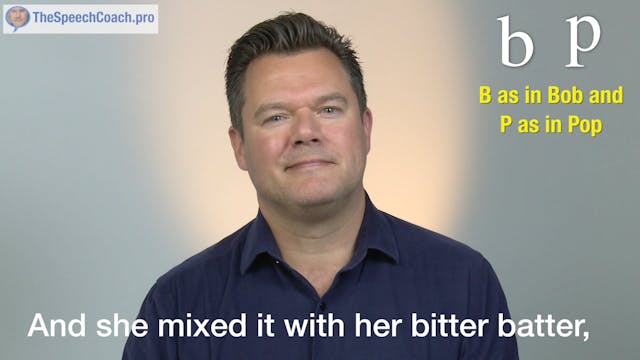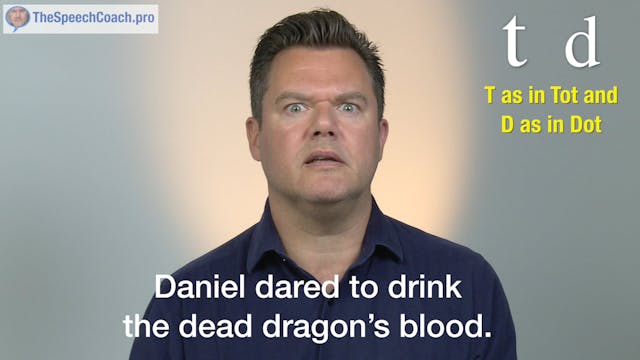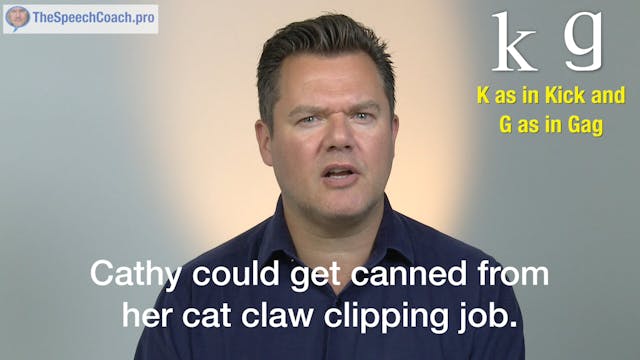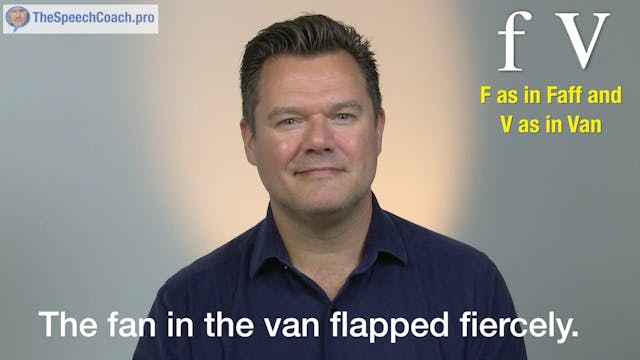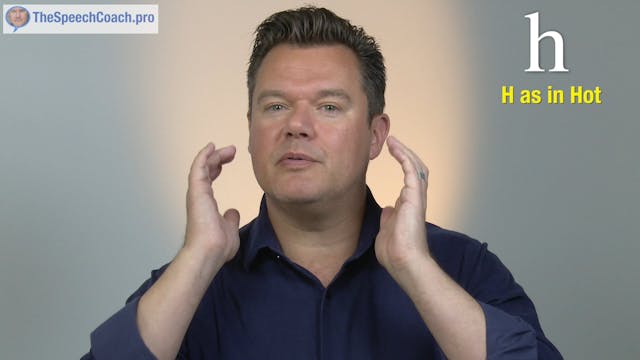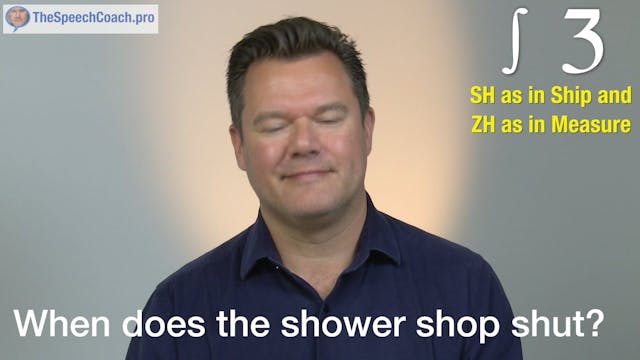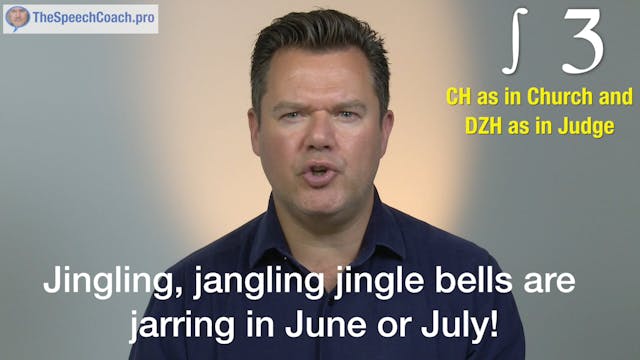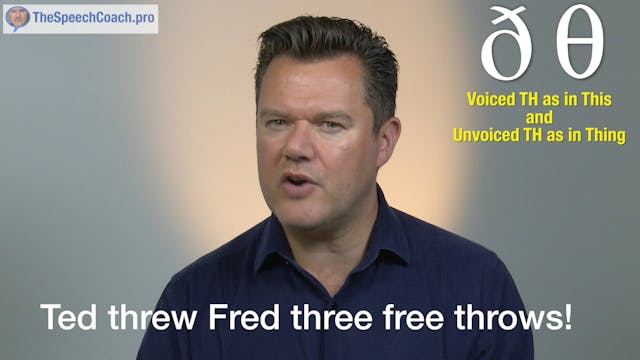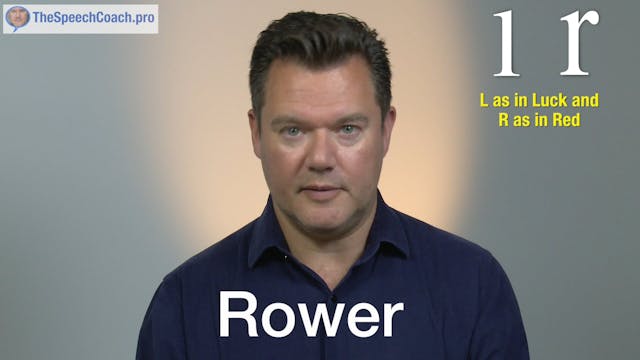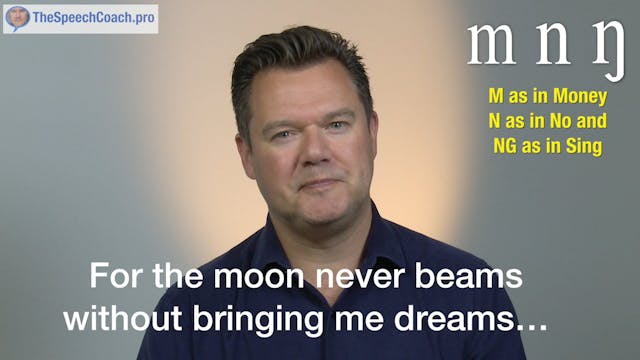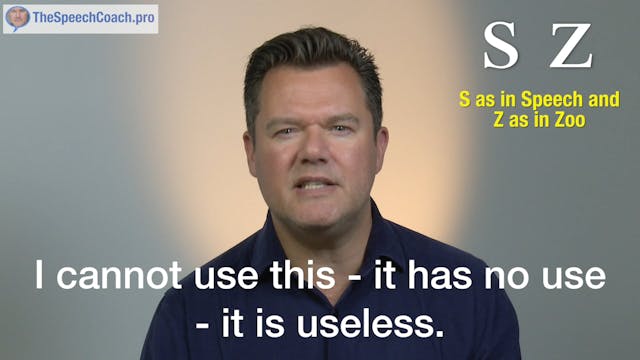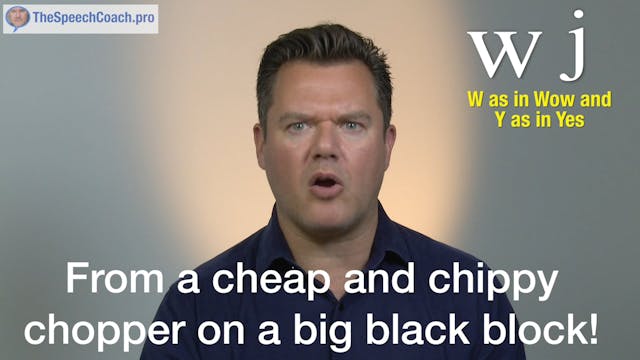Voice & Speech Training - LIFETIME ACCESS
Voice & Speech Training Through The Neutral Standard British English Accent (NSE) and Practical Phonetics (the International Phonetic Alphabet - IPA) - with Glen McCready, professional actor, presenter, and voiceover artist.
"The course begins simply and gets more and more challenging and rewarding" says Glen. "It's the result of many years of teaching. My students told me that what they want is a course that is broken down into clear, easy-to-follow, short lessons.
The lessons are in a listen and repeat format. I say all the sounds, words, and phrases and you simply repeat them after me. You WILL be able to speak with a perfect British English accent."
TRY IT NOW, FREE! Lessons 000-005 in Section 1: The 5 Long Simple Vowels or Monophthongs are free to all users. >> CLICK THEM BELOW, TO GET STARTED FOR FREE!
-
000 Introduction
-
001 AH as in ART
AH is the most open of all the vowel sounds – your jaw is open, your lips are open, and the back of your mouth is open. Rest the tip of your tongue against the backs of your bottom front teeth and gently open your jaw.
Relax your lips. Your tongue will pull back a little and you will feel the so...
-
002 EE as in EAT
For the EE sound we keep the tip of the tongue where it was for AH, behind your bottom front teeth. Our jaw is less open than it was for AH, our lips are once again relaxed and we arch our tongue upwards and this gives us EE as in EAT.
-
003 OO as in DOOM
The OO sound needs a relaxed tongue but your lips should be rounded and pushed forward as though you’re about to whistle.
You will feel your jaw is nearly closed and that the back of your tongue lifts up towards your soft palate – this is the movable part of the roof of your mouth that raises wh...
-
004 AW as in AWE
For the AW sound, the lips are still pushed forward but not so far forward as they were for OO. Your lips should be slightly rounded and the lip muscles should be engaged. The back of the tongue still comes up but it is much lower than it was for OO.
-
005 ER as in EARTH
For the ER sound, relax your lips, allow your jaw to be half-open and feel that the centre of your tongue lifts up a little bit.
A common fault with this sound is that it can be mispronounced in a way that pushes it closer to the AH vowel – so “girl” becomes “garl”. To avoid this, relax your lip...
-
005a Intro
Welcome to the second webinar in which we will cover the seven short simple vowels or monophthongs.
These sounds are a little trickier than the five sounds we learned last time because, as students try to listen to themselves and to get them right, there is a temptation to stretch them. This do...
-
006 A as in CAT
For the A vowel, your lips are neutral, released and relaxed but the front of your tongue is slightly raised. The danger with this vowel is that here in the U.K. it can become dulled or blunted - so that A in “cat” sounds closer to “U” in “cut”. Other accents - for example the German accent - can...
-
007 I as in KIT
The I sound again has neutral, relaxed lips but this time the front of your tongue is raised a bit further - to just under the fully raised position for the long EE sound. Try moving from the high EE position to the slightly lower I position:
EE/I EE/I EE/I
Can you feel that slight but vital ...
-
008 E as in GET
The E vowel sound is produced with neutral, relaxed lips but with the front of your tongue half raised. Compare this tongue position to the fully raised position for EE. Try: EE/E EE/E EE/E
-
009 OO as in BOOK
The oo vowel is a lip vowel and so the lips should be in a rounded position but not as closely rounded as the whistling OO lip position and the back of the tongue is raised. When I first started my training I had a problem with this sound - because my lips were too relaxed, when I tried to say “L...
-
010 U as in CUP
The U vowel position is neutral, relaxed lips with the centre of the tongue slightly raised. Again, watch out that thus vowel isn’t distorted when it is followed by an “L”
-
011 O as in COT
Here is the O vowel - O as in cot. The O vowel position is a slight rounding of the lips with a flat tongue.
-
012 UH as in ANOTHER
This next sound is in many ways the KEY to British Standard English Pronunciation because it occurs again and again and again. It is the neutral vowel or schwa:
“uh” as in “another”
The lips are neutral and the centre of the tongue is half raised. You will find this sound not only in most unstr...
-
012a Intro
-
013 OH as in OH NO v2
We will start with the 3 Lip Diphthongs and this first one was always referred to by my speech teacher as “The Killer”. This is because it is mostly very straightforward and easy - until it is followed by an “L” and then it can get quite seriously distorted.
So, are you ready to learn the ident...
-
014 OW as in How
When you see this sound transcribed phonetically, it is written as the first half of the symbol for A as in “cat” followed by the symbol for oo as in “book”. This might encourage us to produce quite a harsh sound. Something like “A-oo” - the sort of sound Henry Higgins hears from his poor student...
-
015 OY as in Voice
The third lip diphthong is OY as in “voice” which is made by combining AW as in door and I as in sit:
Aw-i OY
I often refer to this as the classic English greeting when abroad: “OY! Can I get chips with this?!”
This is fairly straightforward but again, when this sound is followed by an “L” it ...
-
016 EAR as in Here
This is I as in “hit” plus the neutral “uh” as in actor. A good way to hear the full vowel is to say “eater” and then say it again but without the “T”: EAR. Often, this vowel can be cut in half so “here” becomes “he”.
-
017 AY as in Say
The next sound is AY as in “say” which is “E” as in “Glen” plus “I” as in “hit”. Some accents can substitute “I” as in “eye” for this sound - Eliza Doolittle, for example!
-
018 I as in Eye Spy
Again, take care when an “L” follows this sound or else “smile” can become “smy-ul”. Some accents can push EYE towards OY giving us “Oy spoy…”
-
019 AIR as in Fair
The next lip diphthong is
19 AIR as in “fair”
Which we make by combining “e” as in “Glen” with the neutral vowel “uh” as in “actor”. E-uh AIR.
This sound is very frequently just cut clean in half. Instead of “The air there is fair.” We hear “The e the…”. Many students can find this sound very...
-
020 OOR as in Poor
The final lip diphthong is:
20 OOR as in “poor”.
This is the short monophthong “oo” as in “book” followed by the neutral vowel “uh” as in “actor”. For my U.K. students, I call this sound the “Carry On” vowel because so many characters in those old comedy movies could be frequently heard to ex...
-
021 IRE as in Fire
The Triphthongs are nice and easy to close with - they are 5 of the diphthongs with the neutral vowel at the end:
EYE followed by uh gives us: IRE as in “fire”
-
022 OUR as in Power
This triphthong can also be shortened to just AH as in o.u.r as in “are country” - the full sound is “our”: “our country”.
-
023 OYER as in Employer v2
OYER as in “employer” is the OY sound followed by the neutral “uh”
-
024 OER as in Mower
OER as in “mower” which is OH plus the neutral vowel “uh”
-
025 AYER as in Slayer
AYER as in “slayer” which is AY plus the neutral “uh”
-
026 Introduction - Consonant Sounds
Consonant sounds are made in many different ways but many speakers go wrong because they do not use their voice when they should use their voice. Consonant sounds can be voiced - as in Z: “ZZZ” - you can hear my voice, can’t you? “ZZZ”.
Or consonant sounds can be unvoiced - as in S: “SSS” - you...
-
027 B as in Bob and P as in Pop
The first consonant sound we will cover is “B” as in “BIB”. This is a plosive consonant sound which simply means that the flow of air is stopped and then suddenly released: “B”
Take special care with consonant sounds at the ends of words, that you don’t do too much with your voice so that it sou...
-
028 T as in Tot and d as in Dot
Continuing with the plosives we have:
T which is not voiced and also its voiced equivalent D. Compare the two sounds and listen for the voice in the D sound:
T/D T/D T/D T/D
To make the T sound, press the tip of your tongue against the alveolar ridge - the gum line just above and behind your ...
-
029 K as in Kick and G as in Gag
The consonant C can sometimes be pronounced “S” as in “since” but here we are looking at the hard, plosive, unvoiced “K” sound indicated by both the letters C and K. So that’s “K” as in “can”. And we are also looking at its voiced equivalent “G” as in “get”.
Compare the two sounds:
K/G K/G K/G...
-
030 F as in Faff and V as in Van
Another unvoiced and voiced pair of sounds are “FFF” usually denoted by the letter F and “VVV” denoted by the letter V. Sometimes the letter F can require a voiced “VVV” sound as in the word “of”. The double F in “off” has the unvoiced “FFF” sound. As ever, you can always refer to a dictionary’s ...
-
031 H as in Hot
The “H” sound denoted by the letter aitch is called a glottal fricative sound and is made by breathing out through a slightly narrowed opening at the very back of your mouth and the top of your throat. This is achieved by slightly closing up your airway so that the air hisses slightly: “HHH”. If ...
-
032 SH as in Ship and ZH as in Measure
Now let’s look at the unvoiced and voiced pair “SH” and “ZH”. Phonetically, the symbol for “SH” is a sort of elongated “S” and the symbol for “ZH” is a cross between a “Z” and the number 3. These sounds are postalveolar, meaning the tip of your tongue should be just beyond the alveolar ridge, and...
-
033 CH as in Church and DZH as in Judge
Another pair of voiced and unvoiced sounds is CH and DZH. Phonetically, CH is written as T followed by the symbol for SH. T plus SH gives us CH as in
Church
Match
NatureNotice that this sound isn’t only indicated by a C and H spelling.
DZH is written phonetically as D followed by the sy...
-
034 Voiced TH as in This and Unvoiced TH as in Thing
This is a tricky pair of sounds because although they are always spelled the same way, “T.H.”, they can be pronounced as either voiced: “TH” or unvoiced. As ever, if you are confused, the dictionary will always help you. Phonetically, the voiced “TH”, as in This, symbol is a sort of “o” with a li...
-
035 L as in Luck and R as in Red
This pair of sounds are not linked quite as obviously as the pairs we have studied so far - but the movement of the tongue that is needed to make each sound is very similar. These sounds are “L” and “R”.
To make the “L” sound, the tip of your tongue brushes over the alveolar ridge like this:
... -
036 M as in Money - N as in No and NG as in Sing
The sounds “M”, “N” and “NG” are nasal sounds - so called because the sound of the voice is pushed into your nasal resonating cavities. These are excellent sounds to use when you want to improve the resonance of your voice.
Humming on a “MMM” sound with your lips together and your teeth apart ...
-
037 S as in Speech and Z as in Zoo
Our final pair of voiced and unvoiced sounds are “S” and “Z”.
These sounds are alveolar fricatives so the breath is channeled straight forward into the alveolar ridge: “SSS” “ZZZ”
The “S” sound can become slushy and move towards a “SH” sound. This happens particularly when the S is followed...
-
038 W as in Wow and Y as in Yes
This pair of sounds are approximant sounds. “W” and “Y”. These consonant sounds are almost vowels.
“W” is made with a tiny “oo” sound and then moves to the vowel which follows it.
“Y” is made with a tiny “I” sound and then moves to the sound that follows it. Phonetically it is written as a ...

